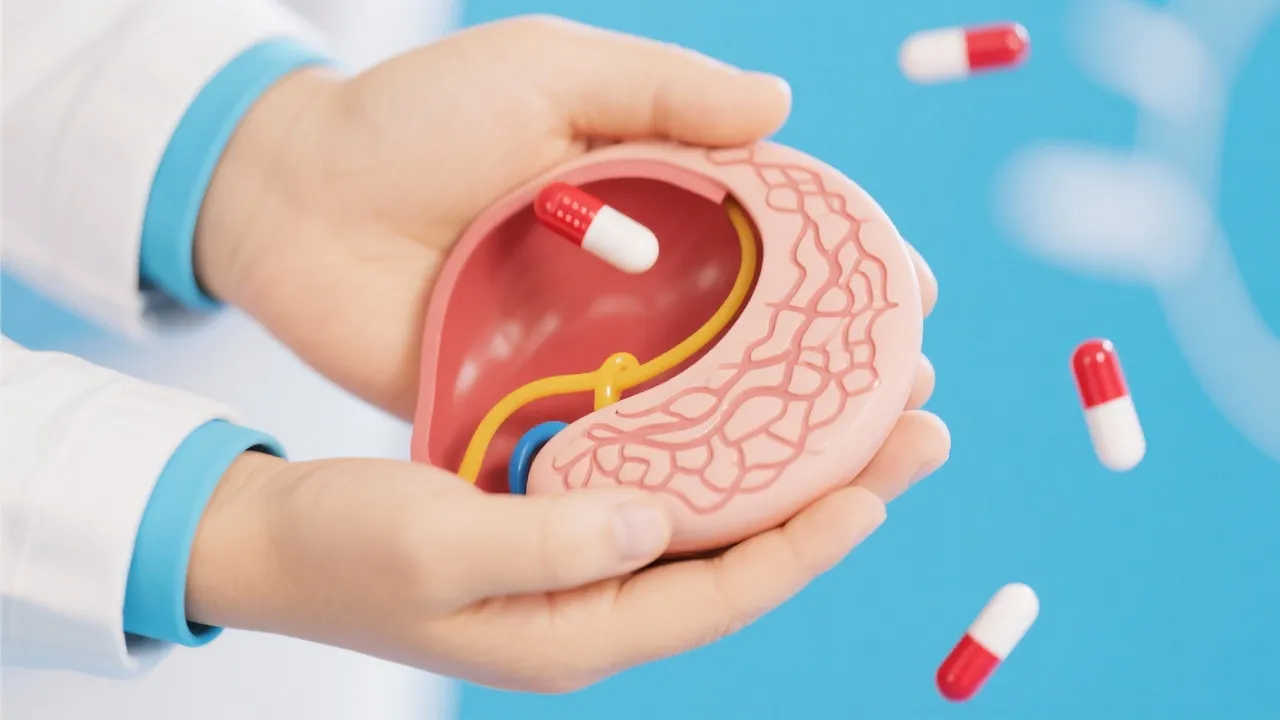This guide delves into the step-by-step treatment of hepatic steatosis, a condition characterized by excessive fat accumulation in the liver. Often associated with metabolic syndrome, hepatic steatosis requires a multidisciplinary approach for effective management, including lifestyle changes, medications, and possible surgical interventions.

Hepatic steatosis, commonly referred to as fatty liver, is a condition characterized by excessive fat accumulation in liver cells. This condition can manifest in two primary forms: alcoholic and non-alcoholic fatty liver disease (NAFLD). The former is due to heavy alcohol consumption, while the latter is associated with metabolic syndrome, diabetes, obesity, and hyperlipidemia. The accumulation of fat in the liver can lead to liver inflammation (steatohepatitis), fibrosis (the formation of scar tissue), and, ultimately, cirrhosis, if left unaddressed.
The initial stages of treatment focus on the underlying causes, which are often linked to obesity, insulin resistance, hypertension, and lifestyle factors. Understanding these connections is essential to managing the disease effectively. Clinicians emphasize the importance of a holistic and multi-faceted treatment approach that integrates lifestyle modification, pharmaceutical intervention, and, in severe cases, surgical options, enabling a comprehensive management strategy.
Recognizing the condition early and adhering to a structured treatment plan can help mitigate disease progression, improve liver health, and enhance overall well-being. Patients must be educated about the risks associated with hepatic steatosis and be encouraged to adopt healthier lifestyle choices. The focus on prevention and early intervention can significantly reduce the burden of liver-related complications in the future.
The management of hepatic steatosis involves several structured steps aimed at reducing liver fat content and preventing further liver damage. Here is a step-by-step guide to treatment:
| Treatment Approach | Description | Effectiveness |
|---|---|---|
| Lifestyle Modifications | Includes diet and exercise changes aimed at weight reduction and improved metabolic health. Comprehensive lifestyle interventions may involve multidisciplinary teams including nutritionists and exercise specialists. | Highly Effective in early-stage hepatic steatosis; can lead to significant reductions in liver fat and improvement in liver enzymes. |
| Medications | Pharmaceutical treatments target specific metabolic pathways affected by the disease, enhancing insulin sensitivity, lipid metabolism, and reducing inflammation. | Moderately effective; outcomes improve with concurrent lifestyle changes. Ongoing research continues to explore newer therapeutic agents with specific targeting of hepatic fat. |
| Surgical Options | Procedures like bariatric surgery are effective for severe obesity-related cases, often leading to substantial weight loss and improvements in liver function. | Effective in severe cases with additional health benefits from weight loss; however, patient selection and comprehensive post-operative care are crucial for maintaining liver health. |
One of the critical components of managing hepatic steatosis is the importance of early intervention. The earlier a diagnosis is made, the better the chances of reversing the condition and preventing serious complications. Patients should be vigilant about their risk factors, which include obesity, diabetes, high cholesterol, and sedentary lifestyles. Educational programs that emphasize awareness about the risk factors and symptoms of hepatic steatosis can empower patients to seek prompt medical attention.
Moreover, healthcare providers play a crucial role in educating patients about the disease. They should utilize teachable moments during routine checkups to discuss liver health, the impact of obesity, and the role of diet and exercise. Creating a patient-centered approach that engages individuals in their care empowers them to take charge of their health and encourages adherence to recommended lifestyle changes.
Psychosocial factors can significantly influence the treatment outcomes for patients with hepatic steatosis. Many individuals with this condition may experience feelings of frustration, anxiety, or depression related to lifestyle changes, chronic disease management, and weight control. Addressing these emotional and psychological components through counseling or support groups can enhance patients' motivation and adherence to treatment protocols.
Furthermore, involving family members in treatment discussions can also provide much-needed support for patients. An environment that promotes healthy eating and active living can be beneficial for sustaining long-term lifestyle modifications. Success stories shared within peer support networks can serve as powerful motivators, helping to instill hope and determination among affected individuals.
As research into hepatic steatosis continues to evolve, new therapeutic targets and strategies will play a vital role in enhancing patient outcomes. Researchers are exploring the genetic and molecular basis of the disease, which may lead to tailored treatments addressing specific pathophysiological processes. Biomarker identification for early diagnosis and monitoring treatment responses is another area that holds promise for improving patient care.
Ongoing clinical trials are investigating novel pharmacotherapy options that specifically target liver inflammation and fibrosis, potentially offering more effective solutions for patients who do not respond to current therapies. The integration of telemedicine in patient care may also enhance follow-up and adherence, allowing for continuous engagement and support in lifestyle changes, which is critical in managing hepatic steatosis.
Tackling hepatic steatosis effectively involves a rigorous, patient-specific approach and broader engagement from both healthcare providers and patients. As awareness grows, and effective strategies are implemented, the potential for reversing hepatic steatosis and preventing its complications will improve significantly. Keeping abreast of current research developments will allow physicians to provide cutting-edge care, optimizing treatment outcomes and enhancing the quality of life for individuals affected by this increasingly prevalent condition.
Explore the Tranquil Bliss of Idyllic Rural Retreats

Ultimate Countdown: The 20 Very Legendary Gaming Consoles Ever!

Affordable Full Mouth Dental Implants Near You

Discovering Springdale Estates

Embark on Effortless Adventures: Unveiling the Top in Adventures Made Easy Outdoor Equipment

Unlock the Full Potential of Your RAM 1500: Master the Art of Efficient Towing!

Dodge Ram: Redefining the Future of Full-Size Trucks with Unmatched Power and Innovation

Get New Phones Without Plans Easily

Smart Strategies to Slash Costs on Your Roof Replacement Endeavor
